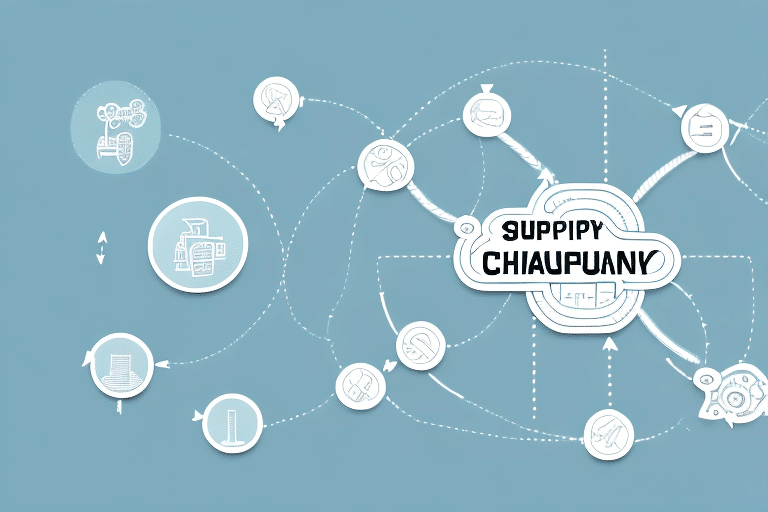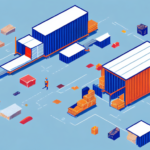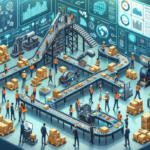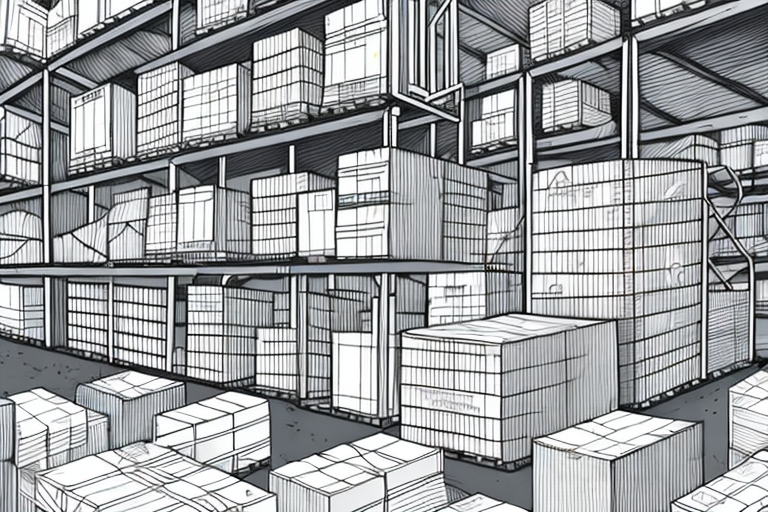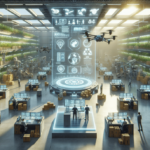What Is Reverse Logistics? Understanding the Basics of This Supply Chain Process
In recent years, the importance of reverse logistics has been steadily growing. Reverse logistics refers to the procedure of managing the flow of products that have been returned by the customer. This process involves everything that happens after a customer returns a product to a business. The goal of reverse logistics is to recover as much value as possible from these products and to minimize waste. Understanding reverse logistics is crucial for businesses of all sizes as it impacts financial performance, customer satisfaction, and sustainability efforts.
Why Reverse Logistics Is Crucial for Businesses of All Sizes
Reverse logistics is an essential aspect of supply chain management. Any business that moves products through a distribution channel must understand the importance of the reverse logistics process. Efficient management of product returns impacts a company's bottom line, customer service, and overall reputation. Without proper reverse logistics handling, returns may not be accounted for correctly, leading to inventory discrepancies, lost sales, and financial losses.
Moreover, reverse logistics can help businesses reduce their environmental impact. By properly handling and disposing of returned products, companies can minimize waste and promote sustainability. This can lead to a positive brand image and customer loyalty, as consumers are increasingly conscious of the environmental practices of the companies they support. Implementing effective reverse logistics strategies not only benefits a business financially but also contributes to a more sustainable future.
- Improved Financial Performance: Efficient reverse logistics can reduce costs associated with returns and inventory management.
- Enhanced Customer Satisfaction: A seamless returns process improves customer trust and loyalty.
- Environmental Sustainability: Proper handling of returns minimizes waste and supports eco-friendly practices.
- Operational Efficiency: Streamlined reverse logistics processes enhance overall supply chain efficiency.
According to a Deloitte report, companies that excel in reverse logistics can achieve a competitive advantage by optimizing their return processes and sustainability efforts.
The Differences Between Forward and Reverse Logistics
Forward logistics and reverse logistics are different in several ways. Forward logistics involves the delivery of products from manufacturers to end-users, focusing on optimizing product flow from supplier to customer. In contrast, reverse logistics involves the return of products from end-users back to the manufacturer or distributor, aiming to manage returns while minimizing losses.
Another key difference lies in the nature of the products being handled. Forward logistics deals with new, unused products being shipped for the first time, whereas reverse logistics handles used, damaged, or defective products being returned for repair, replacement, or disposal. Reverse logistics requires specialized processes and facilities to handle different types of products and their associated challenges.
For a comprehensive comparison, refer to the study on forward vs. reverse logistics published in the Journal of Business Logistics.
The Main Components of Reverse Logistics
The reverse logistics process consists of several key components:
- Returns Management: Includes the initial evaluation and disposition of returned or damaged goods.
- Refurbishment: Involves the reprocessing and restoration of products to sellable condition.
- Disposition: Proper disposal or recycling of products that cannot be refurbished.
- Recall Management: Deals with the return of potentially dangerous products from customers.
In addition to these, transportation, warehousing, and inventory management are also critical aspects of reverse logistics. Effective management can lead to cost savings, improved customer satisfaction, and a positive impact on the environment.
For more details on these components, the APICS Operations Note provides an in-depth analysis.
The Impact of Reverse Logistics on Environment and Sustainability
The reverse logistics process affects not just a company's financial performance but also has significant environmental implications. Proper management of returns can reduce environmental impact by ensuring that returned goods are repaired, resold, or recycled, rather than ending up in landfills. This saves natural resources and leads to long-term cost savings for the company. Embracing sustainable practices is often a key part of a company's strategy and operations.
One of the biggest challenges in implementing sustainable reverse logistics practices is the lack of infrastructure and technology to handle returns efficiently. Many companies struggle with the logistics of collecting, sorting, and processing returned goods, leading to delays, increased costs, and environmental impact. However, advancements in technology and innovative solutions are helping companies streamline their reverse logistics processes and reduce their environmental footprint.
Transparency and communication with customers are also essential for sustainable reverse logistics. By providing clear information on how to return products and what happens to them after they are returned, companies can build trust and encourage customers to participate in sustainable practices, leading to increased loyalty and a stronger brand reputation.
For more on the environmental benefits of reverse logistics, visit the EPA's Sustainable Materials Management page.
Common Challenges in Implementing Effective Reverse Logistics
Implementing a successful reverse logistics strategy can be challenging for many companies. Some common challenges include:
- Managing Inventory of Returned Products: Tracking and accounting for returned items can lead to discrepancies and financial losses if not handled correctly.
- Determining Proper Disposition: Deciding whether to refurbish, resell, recycle, or dispose of returned products requires careful analysis.
- Transportation and Logistics: Handling the transportation of returned products is often more complicated than forward logistics.
- Specialized Facilities and Equipment: Reverse logistics may require specialized facilities and equipment for handling damaged or defective products.
- Managing Customer Experience: Ensuring a seamless and hassle-free returns process is vital to maintaining customer satisfaction.
Addressing these challenges requires strategic planning, investment in technology, and possibly partnering with third-party logistics providers. The McKinsey & Company insights offer strategies to overcome these obstacles.
Best Practices for Optimizing Your Reverse Logistics System
To optimize the reverse logistics system, companies should adopt several best practices:
- Accurate Record Keeping: Maintain detailed records of returned products to track patterns and identify areas for improvement.
- Invest in Robust Returns Management Systems: Utilize software solutions to streamline returns processes and improve efficiency.
- Leverage Technology: Use tracking systems and automation to enhance the management of returned goods.
- Focus on Refurbishment and Reselling: Prioritize refurbishing and reselling returned products over disposal to maximize value recovery.
- Partner with Third-Party Logistics Providers: Collaborate with specialized logistics partners to manage transportation and processing of returns effectively.
- Clear Communication Channels with Customers: Provide transparent return policies and streamline the returns process to enhance customer satisfaction.
Implementing these best practices can lead to significant improvements in reverse logistics efficiency. The Inbound Logistics website offers additional resources on optimizing reverse logistics systems.
The Role of Technology in Streamlining Reverse Logistics Operations
Technology plays a critical role in managing reverse logistics operations. Key areas where technology is making an impact include:
- Inventory Tracking: Advanced inventory management systems can document product returns and analyze return reasons to identify and mitigate losses.
- Transportation Management: GPS tracking and route optimization tools help efficiently manage the transportation of returned goods.
- Data Analytics: Analyzing return data can reveal patterns and insights that inform better business decisions.
- Automation: Automated systems streamline the receiving, sorting, and processing of returned products, reducing time and labor costs.
By leveraging these technologies, businesses can improve the efficiency and effectiveness of their reverse logistics operations, ultimately reducing costs and enhancing customer satisfaction. The Forbes Technology Council discusses the transformative impact of technology on reverse logistics.
Successful Case Studies in Reverse Logistics
Several companies have implemented effective reverse logistics systems, serving as successful examples:
- Dell: Dell has a comprehensive returns management system that includes refurbishing returned products and reselling them, thereby maximizing value recovery.
- Nike: Nike partners with third-party logistics providers to manage their reverse logistics operations efficiently, enhancing their sustainability efforts.
- Walmart: Walmart's "Sustainability 360" program focuses on reducing waste and improving reverse logistics processes, leading to significant cost savings and environmental benefits.
- Amazon: Amazon's "Frustration-Free Packaging" initiative reduces waste and simplifies recycling for customers. Their robust returns management system allows easy returns through various channels.
These companies demonstrate the benefits of investing in reverse logistics management. For more detailed case studies, refer to the Harvard Business Review.
Future Trends in Reverse Logistics and How to Stay Ahead
The field of reverse logistics is evolving, driven by changing consumer behavior, emerging technologies, and increased environmental awareness. To stay ahead, businesses should focus on:
- Circular Economy Models: Emphasizing the reuse and recycling of materials and products to reduce waste and conserve resources.
- Artificial Intelligence and Automation: Implementing AI and automated systems to optimize the reverse logistics process.
- Enhanced Customer Service: Providing better customer experiences through seamless returns processes and clear communication.
- Integration of Sustainability Practices: Embedding sustainability into the reverse logistics strategy to meet consumer and regulatory demands.
Adopting these trends can help businesses reduce waste, conserve resources, and create new revenue streams. As the emphasis on sustainability grows, companies that integrate these practices into their reverse logistics operations will be better positioned for long-term success.
One of the most significant future trends in reverse logistics is the rise of circular economy models. This approach emphasizes the reuse and recycling of materials and products, moving away from the traditional linear model of take-make-dispose. By adopting circular economy principles, businesses can reduce waste, conserve resources, and create new revenue streams. This trend is gaining momentum, with many companies already implementing circular economy practices in their reverse logistics processes.
For insights into future trends, the McKinsey & Company provides a comprehensive overview.
In conclusion, reverse logistics is a vital component of supply chain management that offers significant financial and environmental benefits. By understanding its key components, overcoming common challenges, implementing best practices, leveraging technology, and staying abreast of future trends, businesses can optimize their reverse logistics systems and achieve sustainable growth.















